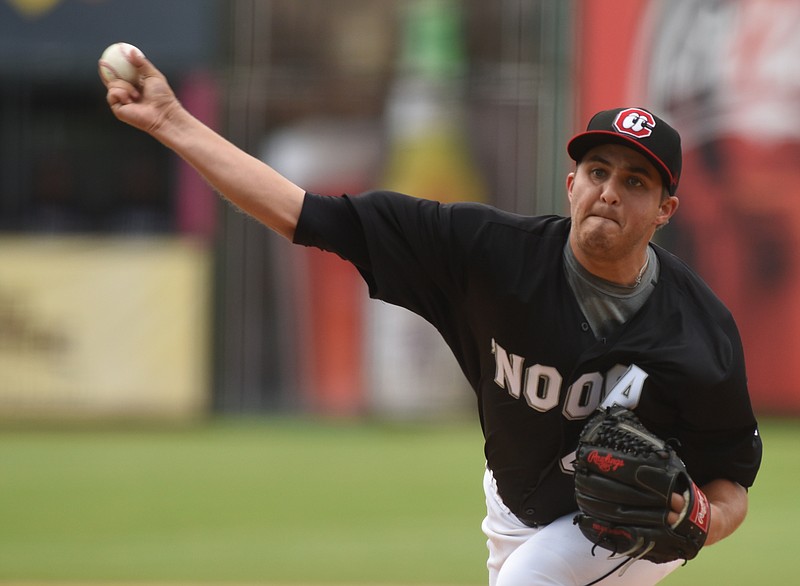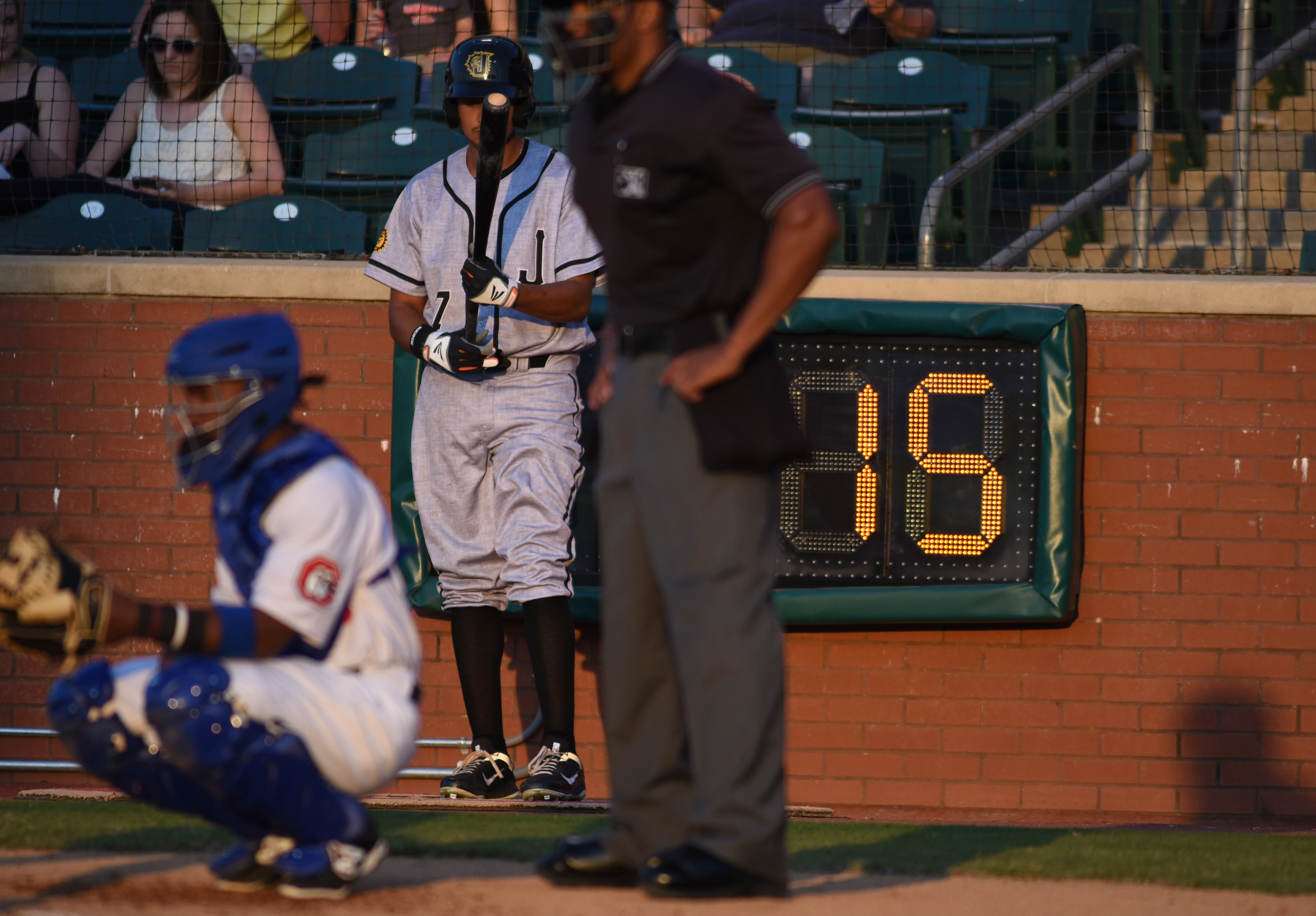The Chattanooga Lookouts are hardly paying attention these days to pitch clocks, which are being used throughout Southern League venues for a second consecutive year.
"Pitch clocks really don't come into play," Lookouts starting pitcher D.J. Baxendale said. "As a staff, we try to work fast anyway, because everybody likes to have a good tempo and everybody likes to get on and off the field as quickly as we can. So the pitch clock doesn't play too much into it except for between the innings, but even then we try to get out there and get going.
"It's all about getting out there and setting the tempo."
Major League Baseball announced in January 2015 that games at the Triple-A and Double-A levels would be accompanied by pitch clocks. The clocks were introduced in an effort to combat the increasing lengths of nine-inning games in the majors, which had reached a record three hours and eight minutes in 2014.
The average length was two hours and 23 minutes in 1950, and the thought was to have pitchers at the highest levels of the minors working at a faster pace to where they could maintain a healthy tempo when they reached the majors.
"It was one of the first questions I had last year when I got here off the plane," said Lookouts starter Aaron Slegers, who reached Double-A during the second half of last season. "I wanted to see what the shot clock was all about, but the staff said that once I got in a game, I wouldn't even think about it. For the large majority of pitchers, it's never really an issue.
"It was never an issue at conception, and it's not an issue now. I like to work quick and keep a game moving, so that clock is more background."
Under the second-year rules, breaks between innings are two minutes and 25 seconds, and the first batter of an inning is encouraged to be in the batter's box and aware of the pitcher with 20 seconds left on the timer. The pitcher must begin his wind-up or begin the motion to come to the set position at any point within the last 20 seconds of the break.
When a pitcher isn't ready, a ball will be assessed in the count. If the batter isn't ready, a strike will be assessed.
Once the inning starts, pitchers are allowed 20 seconds to begin their wind-up or the motion to come to the set position once they receive the ball from their catcher.
In May 2015, Lookouts relief pitcher D.J. Johnson came out of the bullpen in the top of the seventh inning to replace Baxendale. Johnson took several warmup pitches, and the clock ran out, so the opposing batter was assessed a ball.
Earlier this month, Chattanooga leadoff hitter Zack Granite was assessed a strike in the bottom of the first inning by the home-plate umpire for not being ready in the batter's box. Lookouts manager Doug Mientkiewicz raced to the plate to argue and was ejected.
Mientkiewicz made it clear last season that he was not a fan of the pitch clocks, saying, "The umpires have enough on their plate to add something else. Why are we trying to rush something that's been working for almost 200 years? If I paid $100 to watch a game, I would hope it lasted six hours so I could get my money's worth."
If Mientkiewicz's position on pitch clocks has softened in year two, it's only slight.
"They can monitor the pitch clocks all they want, but if the promotional stuff is going on out on the field, it kind of negates it," he said, "and if the people running the clock aren't paying attention, then it's kind of pointless."
Contact David Paschall at dpaschall@rimesfreepress.com or 423-757-6524.

